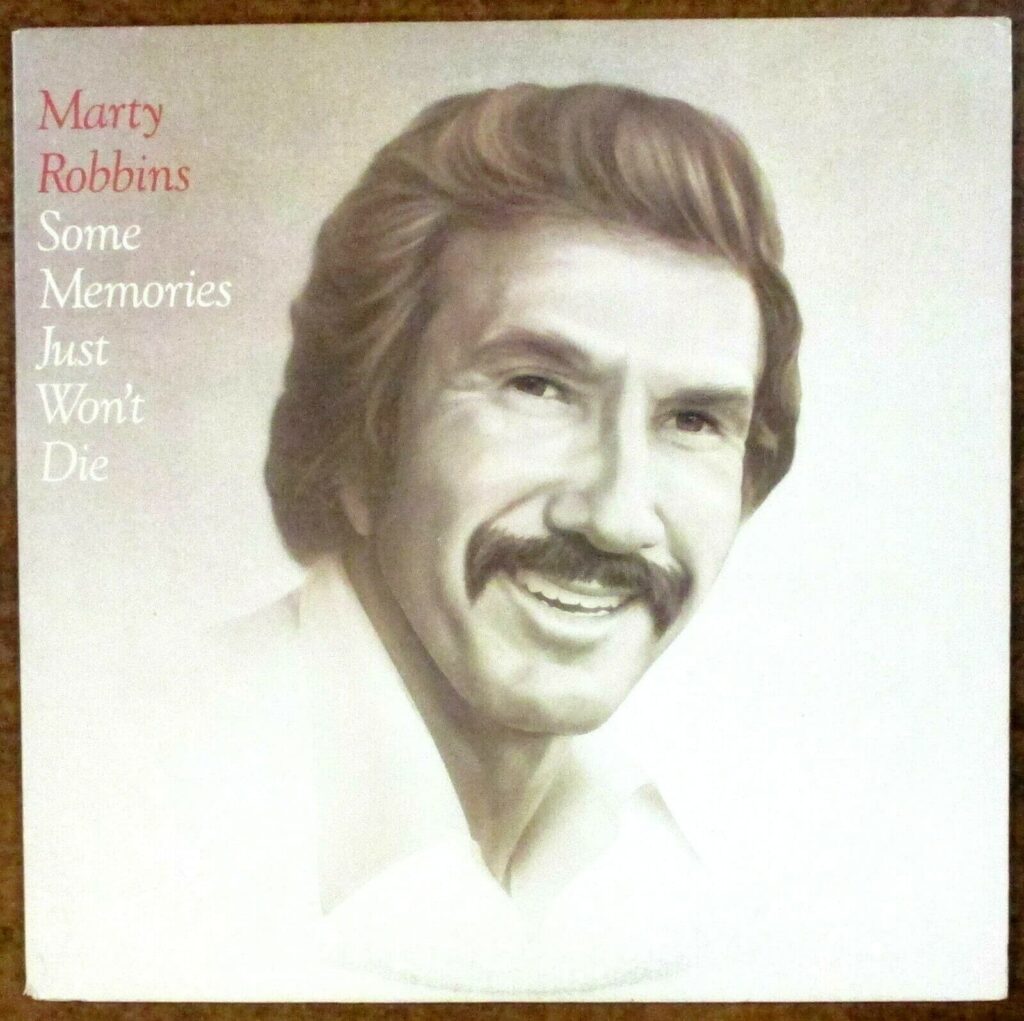
A Whisper Across the Desert Plains – “Dusty Winds” by Marty Robbins
On the album Return of the Gunfighter, which was released in October 1963 by Marty Robbins under Columbia Records, we find the introspective track “Dusty Winds” tucked quietly into Side A of the record. Wikipedia While this song never stood out as a major chart-single for Robbins, the album itself reached No. 8 on the Billboard Country Albums chart when the chart was established in early 1964, remaining on the chart for about 12 weeks. Wikipedia
“Dusty Winds” may not announce itself with the spectacle of a full-blown Western tale—there are no dramatic gunfights or sweeping horseback chases—yet its power lies precisely in its quiet resignation and weathered strength. The title alone evokes the relentless march of wind through open plains, stirring dust and memory in the same breath. For listeners who have felt the pull of the horizon, the fading of summer light, or the hush that settles once youth has passed, this song offers a deeply resonant space.
The story behind the song places us in the drier, more solitary corners of the West—where the land is worn, the skies stretch wide, and the heart must endure in spite of both. Robbins chooses a kind of visual austerity: “dusty winds” become metaphor and reality at once—wind that carries not only dust, but the residue of hopes, the ache of memories, and the truth of survival when the trail grows long and silent. Positioned within an album full of John Babcock’s compositions (the credited writer for “Dusty Winds” is J. Babcock) Apple Music – Web Player+1 Robbins clearly wanted to explore a mood: not triumph, but endurance; not swagger, but reflection.
Musically, “Dusty Winds” benefits from the hallmark of Robbins’ Western style: sparse arrangement, clear vocal presence, an open space in which the listener’s mind may roam. The production on the album allows the song to breathe. Robbins’ voice conveys more than words—it conveys the sense of someone who has known long rides, inland droughts, and the soft ache of goodbye. For an older listener or someone reflecting on the years, the pace of the song feels just right; it doesn’t hurry, it doesn’t embellish—it simply sits with the moment.
What is the deeper meaning here? On one level, the song is a meditation on the passage of time and the land’s passage with it. When the wind is dusty, it implies that something has been carried away already—moisture, possibility, maybe even youth. Yet at the same time, the wind persists. It reminds us that some things endure: memory, love, the simple act of riding on. For those who have seen seasons shift, the phrase “dusty winds” might evoke a lifetime of watching, and knowing that the self is tied to more than one place and more than one moment.
In Robbins’ broader legacy—where songs like “El Paso” or “Big Iron” dominate discussions—the quieter tracks like “Dusty Winds” are often overlooked, yet they reveal dimensions of his artistry that reward revisiting. They are songs written for evenings, for the reflective listener, and for the moment when the radio turns low and the stars come out. Hearing “Dusty Winds” now is like pulling an old saddlebag from the corner of the attic—worn, familiar, rich with scent of leather and memory.
In summary, “Dusty Winds” carries a gentle wisdom: the land may change, the trail may end, the dust may settle—yet the heart continues onward. Robbins, in his steady baritone, invites us into that space. To listen is to remember that some songs don’t shout—they whisper. And those whispers often linger the longest.